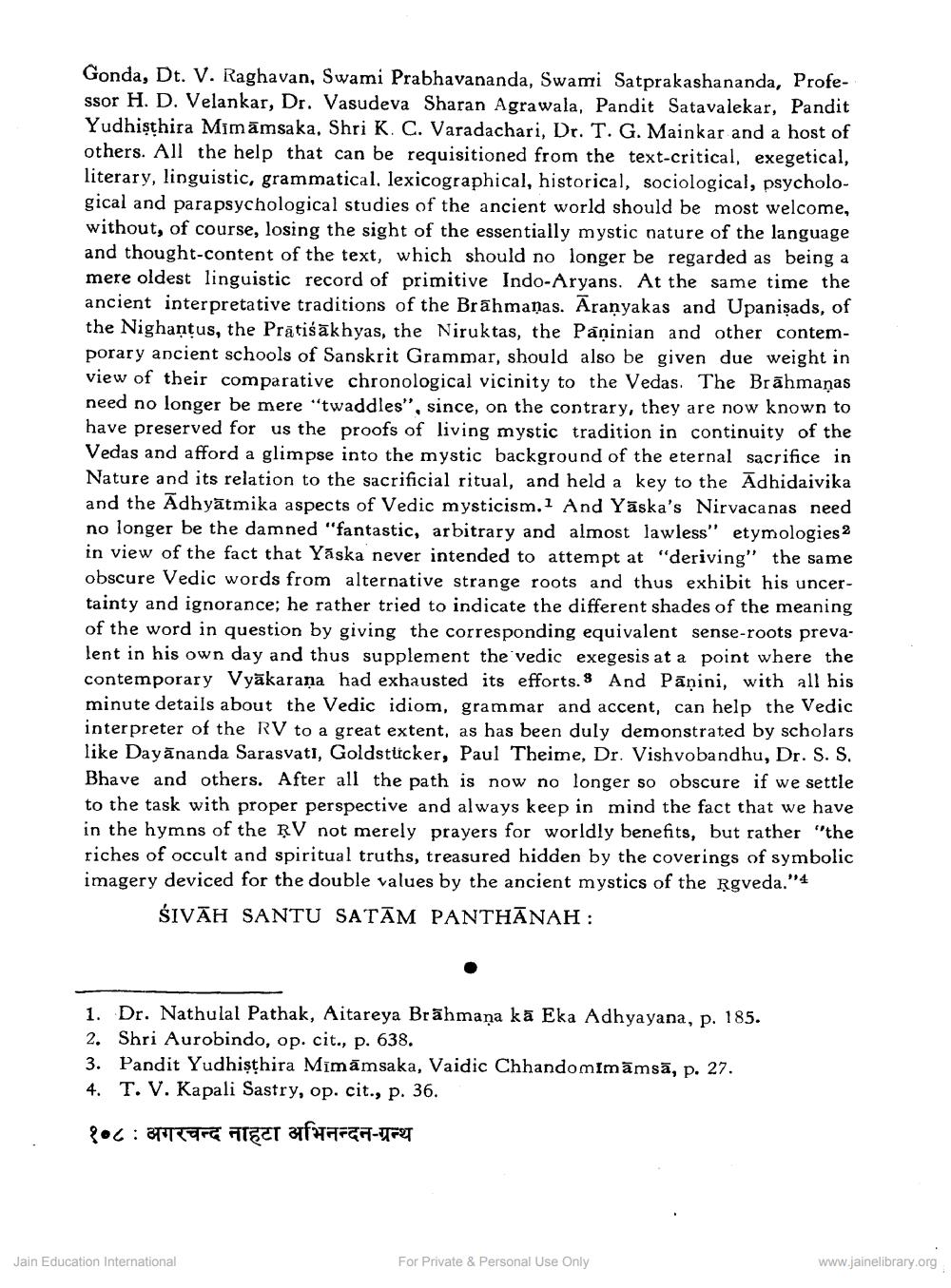Book Title: Quest for a proper perspective in Vedic Interpretation Author(s): N M Kansara Publisher: Z_Agarchand_Nahta_Abhinandan_Granth_Part_2_012043.pdf View full book textPage 8
________________ Gonda, Dt. V. Raghavan, Swami Prabhavananda, Swami Satprakashananda, Professor H. D. Velankar, Dr. Vasudeva Sharan Agrawala, Pandit Satavalekar, Pandit Yudhisthira Mimamsaka, Shri K. C. Varadachari, Dr. T. G. Mainkar and a host of others. All the help that can be requisitioned from the text-critical, exegetical, literary, linguistic, grammatical. lexicographical, historical, sociological, psychological and parapsychological studies of the ancient world should be most welcome, without, of course, losing the sight of the essentially mystic nature of the language and thought-content of the text, which should no longer be regarded as being a mere oldest linguistic record of primitive Indo-Aryans. At the same time the ancient interpretative traditions of the Brahmanas. Aranyakas and Upanisads, of the Nighantus, the Pratisakhyas, the Niruktas, the Paninian and other contemporary ancient schools of Sanskrit Grammar, should also be given due weight in view of their comparative chronological vicinity to the Vedas. The Brahmanas need no longer be mere "twaddles", since, on the contrary, they are now known to have preserved for us the proofs of living mystic tradition in continuity of the Vedas and afford a glimpse into the mystic background of the eternal sacrifice in Nature and its relation to the sacrificial ritual, and held a key to the Adhidaivika and the Adhyatmika aspects of Vedic mysticism.? And Yaska's Nirvacanas need no longer be the damned "fantastic, arbitrary and almost lawless" etymologies 2 in view of the fact that Vaska never intended to attempt at "deriving" the same obscure Vedic words from alternative strange roots and thus exhibit his uncertainty and ignorance; he rather tried to indicate the different shades of the meaning of the word in question by giving the corresponding equivalent sense-roots prevalent in his own day and thus supplement the vedic exegesis at a point where the contemporary Vyakarana had exhausted its efforts. 8 And Panini, with all his minute details about the Vedic idiom, grammar and accent, can help the Vedic interpreter of the RV to a great extent, as has been duly demonstrated by scholars like Dayananda Sarasvati, Goldstucker, Paul Theime, Dr. Vishvobandhu, Dr. S. S. Bhave and others. After all the path is now no longer so obscure if we settle to the task with proper perspective and always keep in mind the fact that we have in the hymns of the RV not merely prayers for worldly benefits, but rather "the riches of occult and spiritual truths, treasured hidden by the coverings of symbolic imagery deviced for the double values by the ancient mystics of the aegveda."4 SIVAH SANTU SATAM PANTHANAH : 1. Dr. Nathulal Pathak, Aitareya Brahmana ka Eka Adhyayana, p. 185. 2. Shri Aurobindo, op. cit., p. 638. 3. Pandit Yudhisthira Mimamsaka, Vaidic Chhandomimamsa, p. 27. 4. T. V. Kapali Sastry, op. cit., p. 36. 108 : अगरचन्द नाहटा अभिनन्दन-ग्रन्थ Jain Education International For Private & Personal Use Only www.jainelibrary.orgPage Navigation
1 ... 6 7 8
